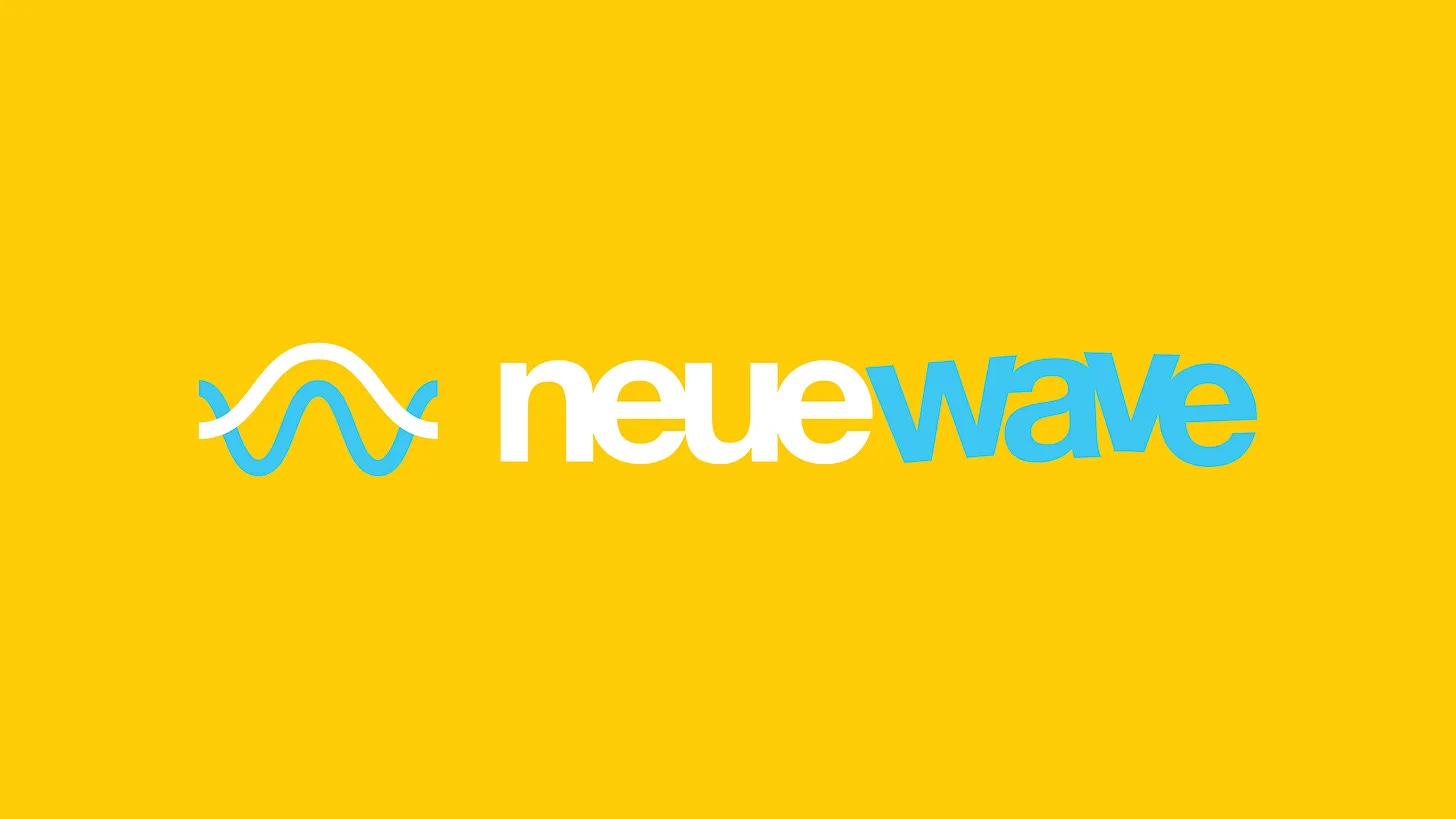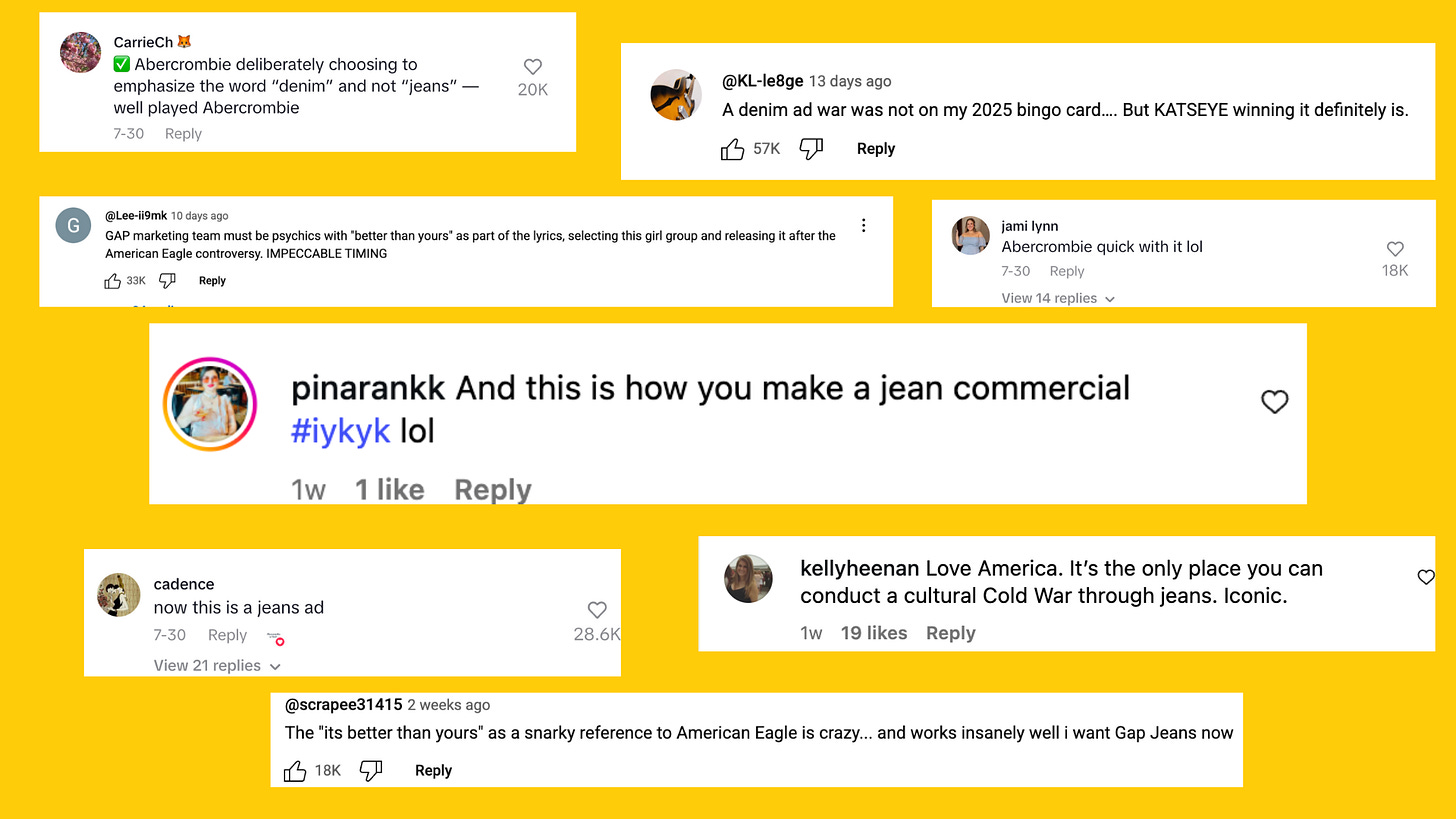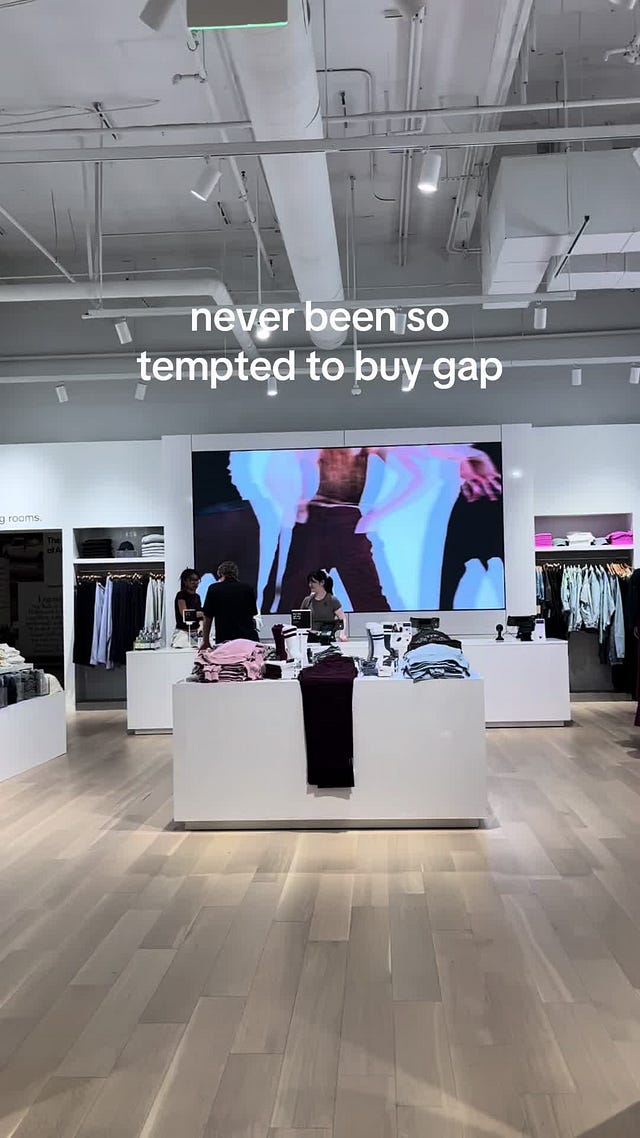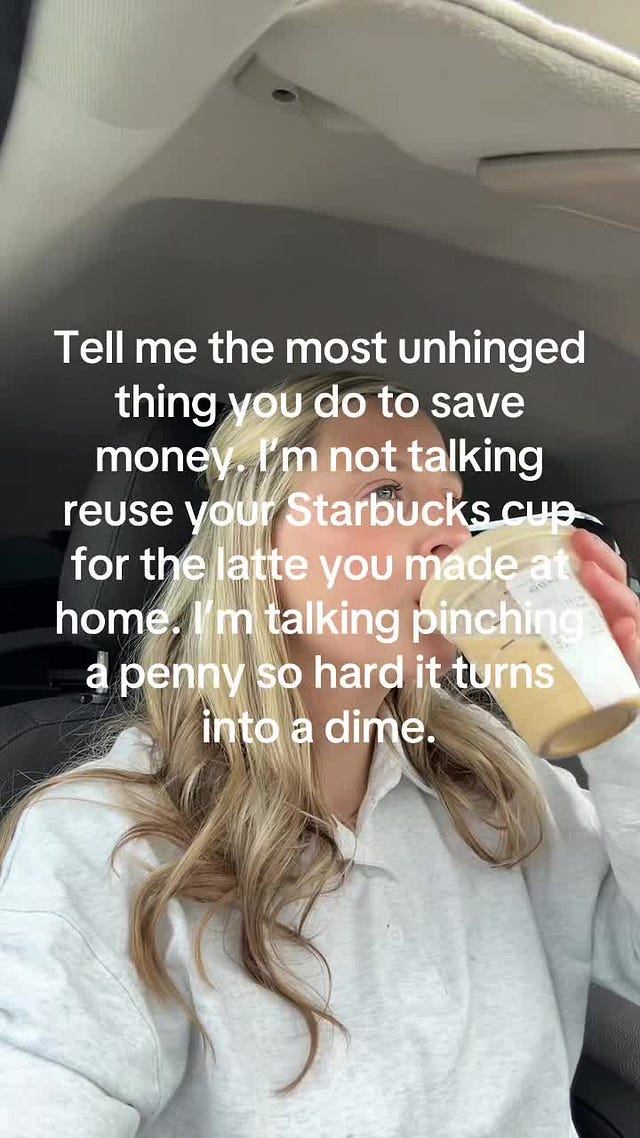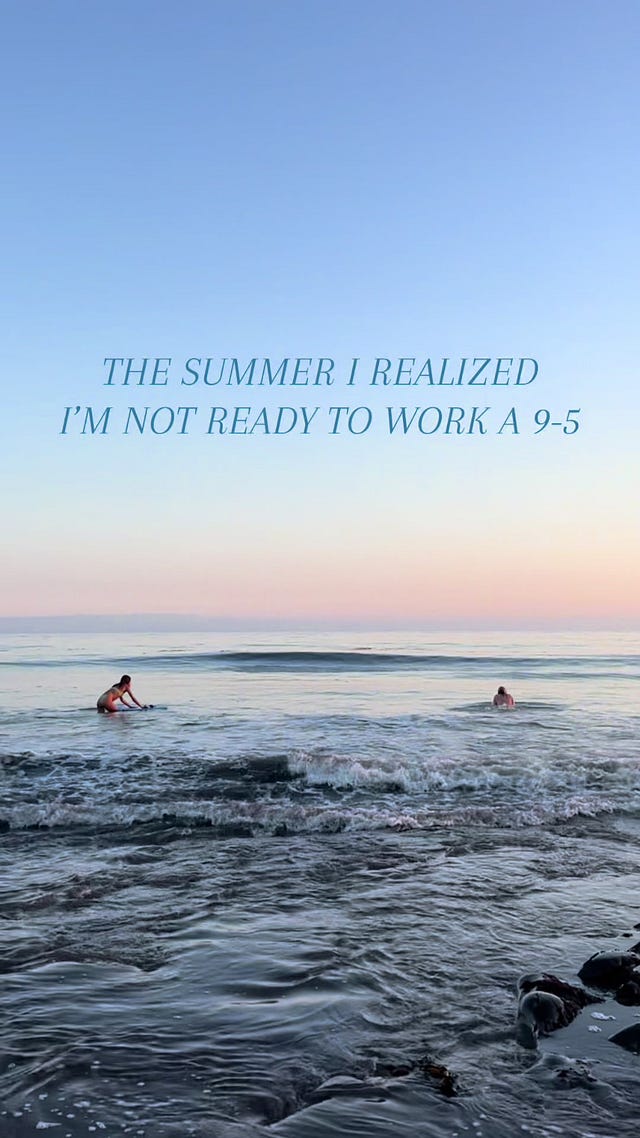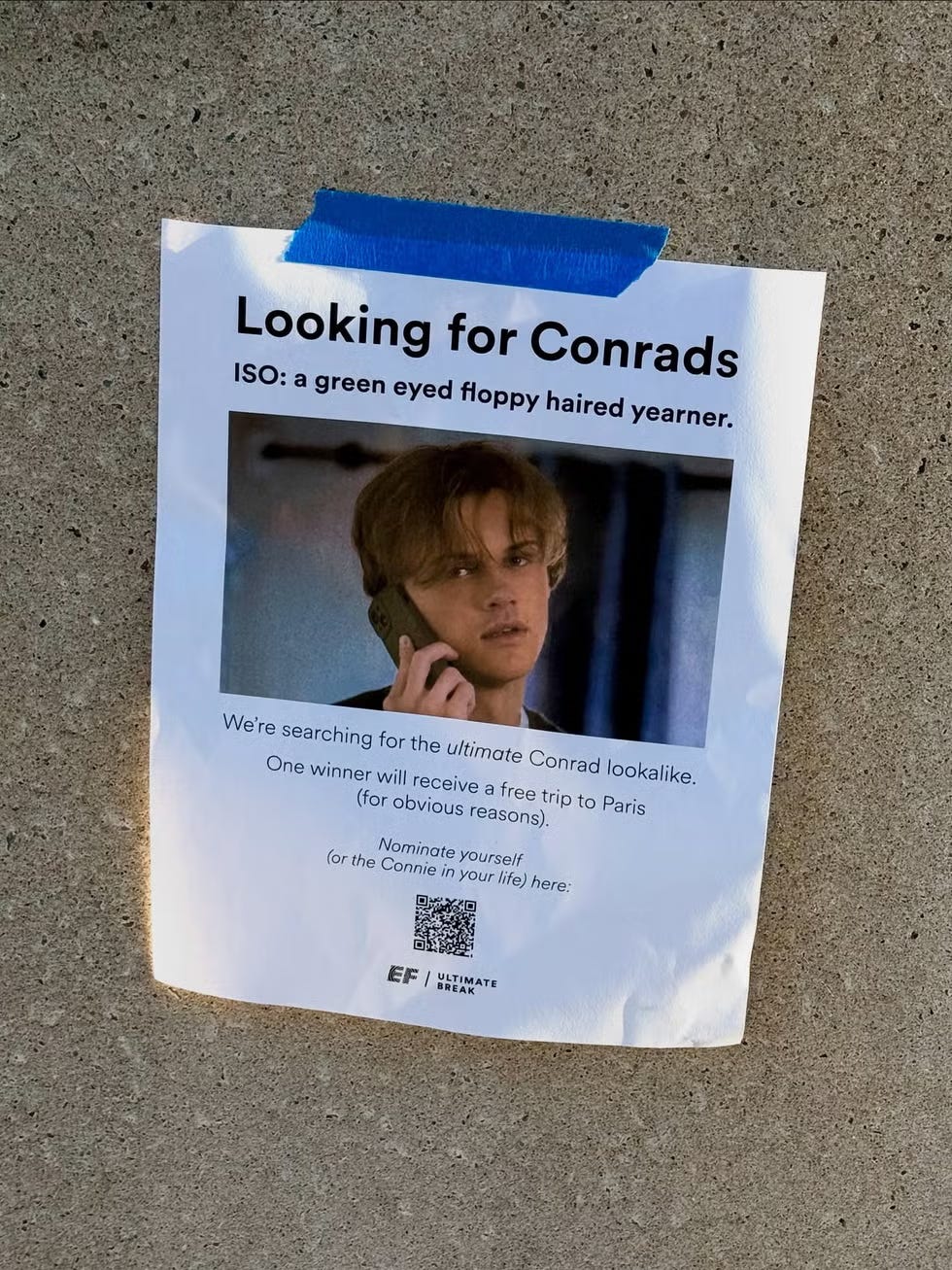September 2025 Trend Report
The Summer I Made You a Playlist
Welcome to neuewave!
Welcome to the September edition of neuewave: maybe the only trend report this month that won’t cover Taylor Swift.
In all seriousness, while Taylor’s various announcements have created some of the most viral moments we’ve seen in a long time, there are a variety of other exciting trends and cultural shifts to dive into, some that build on top of topics we have been exploring around desires for escapism and hypercurated connection.
So let’s round out the summer with what we have been seeing online this month.
👖 Denim Wars
Denim campaigns are having a moment, and not just because it's back-to-school season. The current surge of denim ads has become an all-out showdown, with the public weighing in on what works and what doesn't.
When Sydney Sweeney’s American Eagle campaign appeared on our collective screens a month ago, the backlash was unlike anything we have seen recently, becoming a contender for the next ad industry's Kendall Jenner x Pepsi commercial (iykyk).
While it was most likely coincidental that many major clothing brands centered celebrities and creators in their denim campaigns this month, the public has watched these campaigns unfold as if they were direct responses to each other, creating a viral debate that extends beyond which pair of jeans is superior.
Nevermind that denim ads typically run at the end of summer/beginning of fall months—or the months planning these kind of campaigns require—GAP, Abercrombie & Fitch, and Lucky Brand released campaigns that viewers are seeing as “clapbacks” to the American Eagle campaign, providing a case study in how timing, the right talent, and the right (or wrong) message can resonate to create a viral moment.
No brand has benefited from this more than GAP, with their denim campaign featuring girl group KATSEYE generating 20 million views in its first three days. While the ad itself is well done, the comments reveal a major reason for its success: its stark contrast to American Eagle's controversial campaign.
How this shows up on social:
While TikTok was known for dance trends a few years ago, these days, it is relatively rare for one to truly permeate the algorithm. However, the GAP x KATSEYE campaign has become a widespread online phenomenon, with thousands of videos of people dissecting the video, reacting to the video, and mimicking the choreography on their own channels.
 Tiktok failed to load.
Tiktok failed to load.Enable 3rd party cookies or use another browser
🗣️ Commentary Content
The comment section has always been a place for conversation, but it has evolved into a space for content in its own right. It can be the most revealing part of a post, becoming the place to go when seeking to understand public opinion, current debates, digital subcultures, and even what people find funny. While our feeds are an endless stream of videos and images, the comments have become a secondary source of information—and sometimes: the main event. On rare occasions, a video goes viral because of its comments, forget the content itself.
This change is accelerating, with several trending formats allowing the comment section to be the primary content. The original post serves as a gateway to the conversation, setting the topic for the discussion that follows. While this shift requires passive content consumers to put in extra effort and answer a call-to-action to intertwine with the content themselves, it seems that this is part of the appeal, creating a serendipitous microcommunity that can engage in a discussion and then just as easily disperse.
How this shows up on social:
The impulse to “run to the comments” has created a new genre of content formats that have taken off lately, where people post videos with text asking for the comment section to be flooded with recommendations, stories, reviews, etc. From “what shoe are we all wearing” to “I’m bored, tell me your most unhinged ___” to “help me pick my next read/show”, the comments becoming the main event has quickly become a common engagement tactic on our feeds, and the conduit to spontaneous connection.
🎧 Return of Music as a Social Medium
At this point, I think we should add a section called "What old/analog medium is making its comeback this month?" We've already explored how the AI revolution has led to an affinity for analog mediums and "VHSthetic," and music seems like the obvious next frontier.
Since music consumption has primarily shifted to streaming services, the old art of creating curated mixtapes for your crush and storing burned CD albums under the passenger seat has become a lost art. People have become more focused on curating their own digital music libraries on streaming services, which has transformed playlist creation from a shared activity into a personal one.
In the spirit of Spotify Wrapped, there continues to be an interest in the knowledge of and data around what people listen to. Having access to someone’s streaming habits is a unique lens into their personality and tastes. This is what made the Panama Playlists so intriguing to the public when it was anonymously published this summer– giving a unique perspective on public figures, claiming “The Panama Papers revealed hidden bank accounts. This reveals hidden tastes.”
How this shows up on social:
Recently, we have seen this come to the forefront of pop culture in new ways, with director James Gunn sharing a collection of playlists he made for his new Superman film, curating the vibe for his interpretation of each character from his own personal Spotify account. This playlist collection stands apart from the movie soundtrack as a unique marketing technique for a film release that we haven’t seen before, and brings a personal connection between the director, the characters, and the fans.
And it has even gotten more personal, with Talking Heads frontman David Byrne sharing his personal wedding playlist publicly on his Instagram account, writing, “I’m getting married this week and made an almost entirely instrumental playlist while our guests eat an amazing and spicy dinner,” and spoke in depth about the choices he made when creating the playlist on his stories.
When you consider how Spotify Wrapped remains one of the biggest social days of the year, there is a clear desire for personalized music curation and individual tastes to be shared, discussed, and dissected. So, when Spotify announced recently that they are going to be introducing a direct message feature for users to share and send playlists, artist recommendations, and loved audiobooks directly in-app, it revived that nostalgic feeling of sharing a CD or cassette tape with your friend into the digital world, reigniting music as a shared medium of connection.
🌊The Summer I Took Over the Internet
When one summer drama ends, another begins. After the reality drama of “Love Island” took the internet by storm, now enters a scripted drama with a similar impact.
“The Summer I Turned Pretty” has pierced the cultural zeitgeist in a way that few young adult series have managed in recent years, with the first two episodes of season 3 seeing a 40% spike in viewership compared to the season 2 premiere. Since, it has become the most-watched season of television among women 18-34, and it’s the 5th most-watched returning season on Prime Video globally.
“The Summer I Turned Pretty” has done what few other series can do, inspiring both surface level trends and more serious lines of discourse around human behavior and relationships online. Similarly to how “Love Island” granted the world an outlet to both escape from the world while simultaneously connect with it, “The Summer I Turned Pretty” has clearly become a mainstay in social discourse as the summer comes to a close, even if mental health professionals are worried about the fandom.
How this shows up on social:
We have seen this show permeate both surface-level trends, and deeper discourses. From “The Summer I..” trend, where users fill in the rest of the sentence with serious or unserious things they have done over the summer, to brands like Duolingo, Cosmopolitan, and even FC Barcelona getting in on the discourse. When you click in deeper, there is no shortage of content deeply analyzing the complex dynamics between the characters, to what your favored character says about who you are.
The most chronically online thing we have seen is EF Ultimate Break’s recent campaign that takes the Viral Lookalike Contest to new levels, launching a contest for a free trip to Paris for the person who is the closest lookalike to Conrad Fisher, one of the beloved brothers from the show. If this intrigues you then you’re in luck, because three to five finalists will be put up for a public vote on EF Ultimate Break’s social platforms, so everyone can get a say in the winner.
The internet becomes less of a modality for escapism and moreso the culture we live in every day. Just as quickly as we dive down internet rabbit holes and run to comment sections, we are eagerly running to discuss internet culture and information in real life. The task at hand is now trying to figure out how we fulfill our escapist desires without losing our connection to the world. Though these impulses are seemingly in conflict, we are finding a solution in the rise of hyper-niche interests and ephemeral online communities that offer easy connection points, allowing us to seamlessly click in and out of our chosen worlds.



